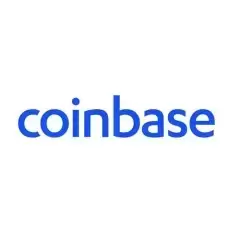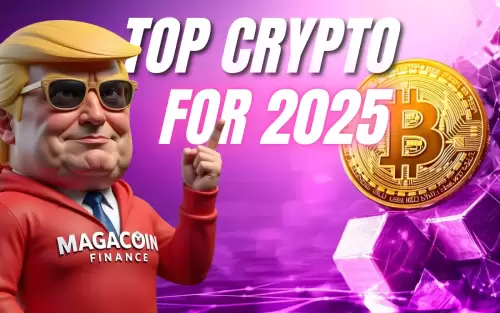 |
|
 |
|
 |
|
 |
|
 |
|
 |
|
 |
|
 |
|
 |
|
 |
|
 |
|
 |
|
 |
|
 |
|
 |
|
Cryptocurrency News Articles
Vitalik Buterin Continuously Pushes the Boundaries of Ethereum. His Goal: to Make This Layer 1 Blockchain Faster
May 23, 2025 at 01:05 pm
Vitalik Buterin is not the type to be content with just presenting his ambitious projects for 2025 and then disappearing

In the rapidly evolving landscape of blockchain technology, few figures command as much attention and respect as Vitalik Buterin, the co-founder of Ethereum. Buterin’s unwavering commitment to pushing the boundaries of Web3 has been instrumental in shaping the future of decentralized finance (DeFi), non-fungible tokens (NFTs), and the broader crypto ecosystem.
Buterin’s latest musings offer a glimpse into his ongoing pursuit of a faster, more efficient, and fundamentally sustainable Layer 1 blockchain. He envisions a network capable of handling extreme loads without any loss of security or decentralization—an endeavor that began with the introduction of PoS and is now being advanced through proposals like EIP-4444.
This project is part of a broader ambition: to build a blockchain capable of supporting a thriving digital economy while maintaining its open and decentralized spirit. Buterin wants an Ethereum ready to explode, but on solid foundations.
The Sine Qua Non Conditions According to Vitalik Buterin for a Sustainable Layer 1
Vitalik Buterin is not the type to be content with just presenting his ambitious projects for 2025 and then disappearing: he insists, applies pressure, and shares. For him, a solid Ethereum L1 must meet four major conditions.
First, the network’s performance should be measured in both normal and extreme situations. According to him:
Before real-time proofing is deemed production ready, strict cryptographic guarantees are required.
This requirement is based on the experience of Succinct, which recently achieved a major breakthrough by performing a ZK proof in less than 12 seconds. But this feat still consumes too much energy: nearly 100 kW, while Buterin dreams of a network that could be validated at home with only 10 kW.
Finally, he insists on the need to increase the gas limit, hoping for a multiplication by 10, or even 100. Buterin writes: “We want 10-100x the L1 gas limit.”
The ambition is clear: to make Ethereum a network that is scalable, green, and accessible.
Ethereum Copies Bitcoin: Simplicity and Sovereignty at the Heart of the Vision
Buterin does not hide his admiration for Bitcoin. He highlights that its structure is “so simple a high schooler can understand it.” This simplicity is a source of robustness and transparency. In contrast, Ethereum still suffers from a complexity that hinders adoption. To address this, Buterin proposes aligning Ethereum with this philosophy.
This approach is coupled with a quest for individual sovereignty. He explains that local nodes are essential for trustless and censorship-resistant access to the blockchain. The so-called “stateless” nodes, which store only part of the data, represent a key evolution.
Buterin explains that these partially stateless nodes “offer direct local access to relevant data while ensuring maximum privacy.” This approach is designed to guarantee that each user remains master of their interactions with Ethereum, safe from any centralization.
Sovereignty and Decentralization: Pillars of a Resilient Ethereum
Buterin continuously reminds us that decentralization is the cornerstone of Ethereum. According to him, scaling the network should not come at the expense of this decentralization. That’s why he proposes solutions to lighten the nodes’ burden, such as EIP-4444 which limits the storage of historical data to 36 days. This measure aims to facilitate the maintenance of personal nodes.
Buterin also specifies:
Outsourced ZK solutions will remain costly, and do not protect against RPC censorship.
These remarks highlight the threat posed by the concentration of access providers. He wants Ethereum to remain a network where anyone can validate, read, and write freely. These technical innovations are part of a humanistic and pragmatic vision. They combine performance and respect for digital freedoms.
Here are some key figures to understand this vision:
* 36 days: the maximum time for which full nodes will need to store data, thanks to EIP-4444.
* 10-12 seconds: the time achieved by Succinct to perform a ZK proof.
* 10 kW: the energy consumption targeted for validating the network at home.
With a man like Vitalik Buterin, so determined and hardworking, Ethereum doesn’t rest. Proposals follow one after another and updates are constant. On the price side, Ethereum’s crypto follows in bitcoin’s footsteps. Some analysts put forward three solid reasons to believe ETH could reach $5,000 this year: increased adoption, major technical improvements, and a favorable market dynamic. This trajectory illustrates the rise of an ever more robust and ambitious network.
Disclaimer:info@kdj.com
The information provided is not trading advice. kdj.com does not assume any responsibility for any investments made based on the information provided in this article. Cryptocurrencies are highly volatile and it is highly recommended that you invest with caution after thorough research!
If you believe that the content used on this website infringes your copyright, please contact us immediately (info@kdj.com) and we will delete it promptly.






























































